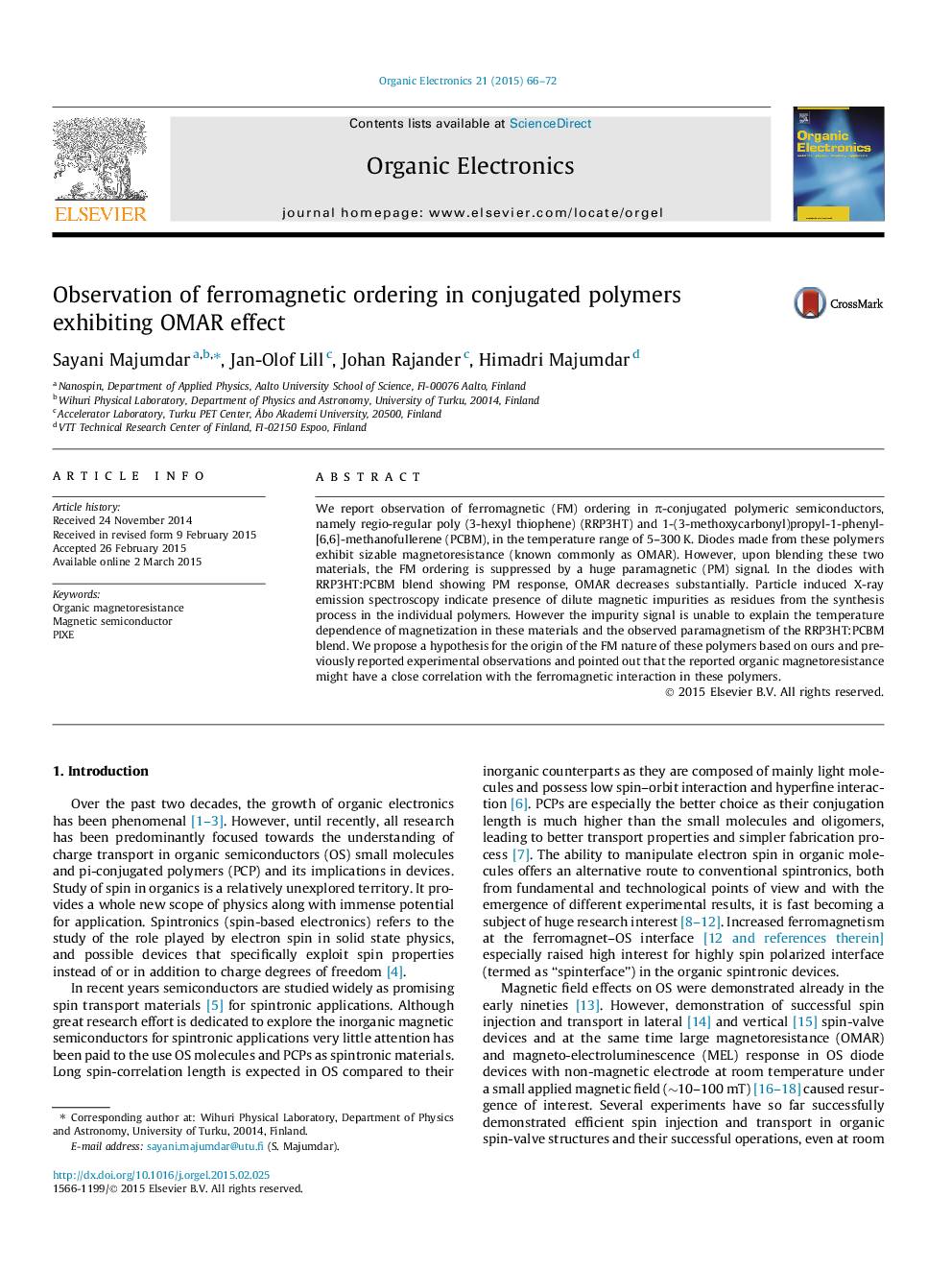| Article ID | Journal | Published Year | Pages | File Type |
|---|---|---|---|---|
| 7701691 | Organic Electronics | 2015 | 7 Pages |
Abstract
Observation of ferromagnetic ordering in Ï-conjugated polymeric semiconductors, namely regio-regular poly (3-hexyl thiophene) (RRP3HT) and 1-(3-methoxycarbonyl)propyl-1-phenyl-[6,6]-methanofullerene (PCBM) in the temperature range of 5-300Â K could lead to a new explanation of sizable magnetoresistance effect (known commonly as OMAR) in the diode devices made from these polymers. Although, particle induced X-ray emission spectroscopy indicate presence of dilute magnetic impurities as residues from the synthesis process in the individual polymers, the impurity signal is unable to explain the temperature dependence of magnetization in these materials and the observed paramagnetism of the RRP3HT:PCBM (1:1) blend. We propose a hypothesis for the origin of the FM nature of these polymers and the organic magnetoresistance in them based on experimental and theoretical results from our own experiments as well as in literature.
Related Topics
Physical Sciences and Engineering
Chemistry
Chemistry (General)
Authors
Sayani Majumdar, Jan-Olof Lill, Johan Rajander, Himadri Majumdar,
